Contents
Guide
Page List



H ealthy E asy M exican :
Over 140 Authentic Low-Calorie, Big-Flavor Recipes Text, and photographs on , copyright 1995, 2021 by Velda de la Garza, MS, RDN
Photographs copyright 2021 by Justin Walker Originally published as
Healthy Mexican Cooking: Authentic Low-Fat Recipes by Appletree Press in 1995. First published in revised form by The Experiment, LLC, in 2021. All rights reserved. Except for brief passages quoted in newspaper, magazine, radio, television, or online reviews, no portion of this book may be reproduced, distributed, or transmitted in any form or by any means, electronic or mechanical, including photocopying, recording, or information storage or retrieval system, without the prior written permission of the publisher. The Experiment, LLC | 220 East 23rd Street, Suite 600 | New York, NY 10010-4658
theexperimentpublishing.com This book contains the opinions and ideas of its author. It is intended to provide helpful and informative material on the subjects addressed in the book.
It is sold with the understanding that the author and publisher are not engaged in rendering medical, health, or any other kind of personal professional services in the book. The author and publisher specifically disclaim all responsibility for any liability, loss, or riskpersonal or otherwisethat is incurred as a consequence, directly or indirectly, of the use and application of any of the contents of this book. THE EXPERIMENT and its colphon are registered trademarks of The Experiment, LLC. Many of the designations used by manufacturers and sellers to distinguish their products are claimed as trademarks. Where those designations appear in this book and The Experiment was aware of a trademark claim, the designations have been capitalized. The Experiments books are available at special discounts when purchased in bulk for premiums and sales promotions as well as for fund-raising or educational use.
For details, contact us at . Library of Congress Cataloging-in-Publication Data Names: De la Garza, Velda, author. Title: Healthy easy Mexican : 140 authentic low-calorie, big-flavor recipes / Velda de la Garza, MS, RDN. Description: 2nd edition. | New York : The Experiment, [2021] | Includes index. | Low-fat diet--Recipes. | Low-fat diet--Recipes.
Classification: LCC TX716.M4 L34 2021 (print) | LCC TX716.M4 (ebook) | DDC 641.5972--dc23 LC record available at https://lccn.loc.gov/2021016432 LC ebook record available at https://lccn.loc.gov/2021016433 Ebook ISBN 978-1-61519-761-3 Cover and text design by Beth Bugler
Food styling by Veronica Spera
Author photograph by Diana Cantu HEALTHY
EASY
MEXICAN 
Contents
La Cocina Mexicana
The Mexican Kitchen La Despensa Mexicana
The Mexican Pantry Salsas y Dips
Salsas & Dips Aperitivos y Acompaamientos
Appetizers & Sides Caldos, Sopas y Panes
Soups & Breads Ensaladas
Salads Carnes y Pescado
Meat & Fish Aves
Poultry Comidas sin Carne
Meatless Meals Arroz y Frijoles
Rice And Beans Postres
Desserts


Introduction
F ood is such a vital part of our Mexican heritage. We use food to celebrate the important stages of our lives. From baptisms to weddings to wakes, food forms the glue of life that brings us together and binds us as families and friends. Many deep-rooted traditions go along with the ever-so-satisfying food that represents our culture. Even our Aztec ancestors were known to have prepared tamales using wild game in the 1500s. In recent years, Mexican food has become one of the most popular cuisines in the United States.
Its often diverse, differing with each geographic area. Hatch chiles are incorporated into many dishes in New Mexico; in Texas, Anaheim and ancho chiles are more often used. In California, strawberry and pineapple tamales are popular, but theyre much less common in Texas. California tamales are meal-sized concoctions; in Texas, you would likely consume two or three smaller ones as part of a meal. Carnitas are very popular in California, and not as common in Texas. Many of these foods are variations of the same basic ingredients, such as enchiladas, prepared with different regional touches.
The recipes in this book are the type I enjoy preparingfew ingredients, short preparation times, and lower in calories than many traditional preparations. Many of the recipes I learned to cook at home with my mother, some are from my husbands family, and others are from friends. Some are recipes Ive collected while living in different parts of the country. Though I prepare them by incorporating newer food trends, these recipes are still representative of hundreds of years of history and culture. They maintain their tradition in our families, despite borders, economics, and the passing of time. This cookbook shows that many of our traditional recipes can be modified to be healthier and still taste great.
In most of the recipes, the amounts of seasoning and vegetablesbay leaves, cilantro, epazote, garlic, and onionshave been increased to add flavor without too many additional calories.  Many of our traditional foods are naturally healthy. We enjoy so many variations of salsas, such as incorporate vitamin- and fiber-rich ingredients such as salsas, corn, and beans. Avocados are a key ingredient in Mexican dishes. They are considered a superfood because they contain so many powerful nutrients and phytochemicals. Theyre also a good source of monounsaturated fats, which can help lower cholesterol levels and reduce inflammation.
Many of our traditional foods are naturally healthy. We enjoy so many variations of salsas, such as incorporate vitamin- and fiber-rich ingredients such as salsas, corn, and beans. Avocados are a key ingredient in Mexican dishes. They are considered a superfood because they contain so many powerful nutrients and phytochemicals. Theyre also a good source of monounsaturated fats, which can help lower cholesterol levels and reduce inflammation.
Avocados can be eaten as a simple meal, wrapped in a warm, fresh tortilla (). Legumes, such as beans and lentils (also considered superfoods), have always been important staples in our diets. Lentils can be prepared with Mexican seasonings (). There are also countless options for meatless meals with Mexican flavors. These can be as simple as pinto beans combined with rice or corn, which make for a complete and healthy (not to mention cost-effective) meal. Tostadas (such as ) can make delectable complete meals without using meat.
Cheese is another common ingredient in Mexican foods. Many of the recipes in this book incorporate cheese, but I recommend those that are lower in fat, such as reduced-fat cheddar, American, and Monterey Jack cheeses. Many Mexican cheeses are made with part-skim milk and are delicious when combined with the stronger flavors of foods such as enchiladas. Some recipes call for full-fat cheeses in smaller quantities, which is also acceptable when used occasionally. 


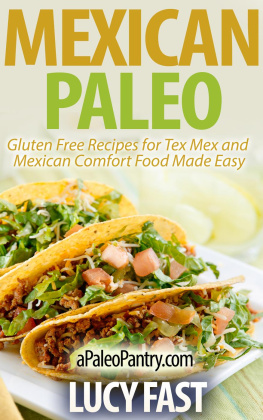
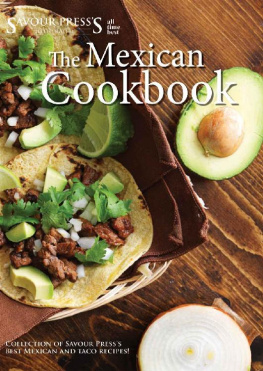
![Avery Moore - Mexican Cookbook 365: Tasting Mexican Cuisine Right In Your Little Kitchen! (Best Mexican Cookbook, Mexican Dessert Cookbook, Slow Cooker Mexican Cookbook, Mexican Salsa Cookbook) [Book 1]](/uploads/posts/book/288399/thumbs/avery-moore-mexican-cookbook-365-tasting-mexican.jpg)
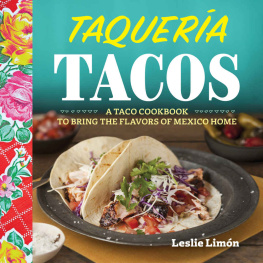
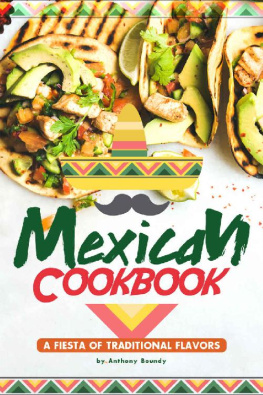
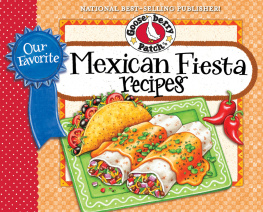
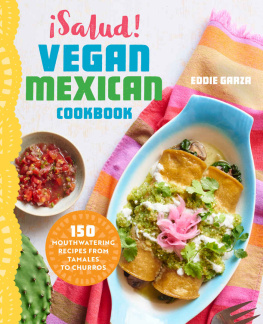
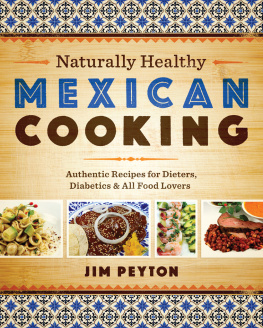



 H ealthy E asy M exican : Over 140 Authentic Low-Calorie, Big-Flavor Recipes
H ealthy E asy M exican : Over 140 Authentic Low-Calorie, Big-Flavor Recipes


 Many of our traditional foods are naturally healthy. We enjoy so many variations of salsas, such as incorporate vitamin- and fiber-rich ingredients such as salsas, corn, and beans. Avocados are a key ingredient in Mexican dishes. They are considered a superfood because they contain so many powerful nutrients and phytochemicals. Theyre also a good source of monounsaturated fats, which can help lower cholesterol levels and reduce inflammation.
Many of our traditional foods are naturally healthy. We enjoy so many variations of salsas, such as incorporate vitamin- and fiber-rich ingredients such as salsas, corn, and beans. Avocados are a key ingredient in Mexican dishes. They are considered a superfood because they contain so many powerful nutrients and phytochemicals. Theyre also a good source of monounsaturated fats, which can help lower cholesterol levels and reduce inflammation.